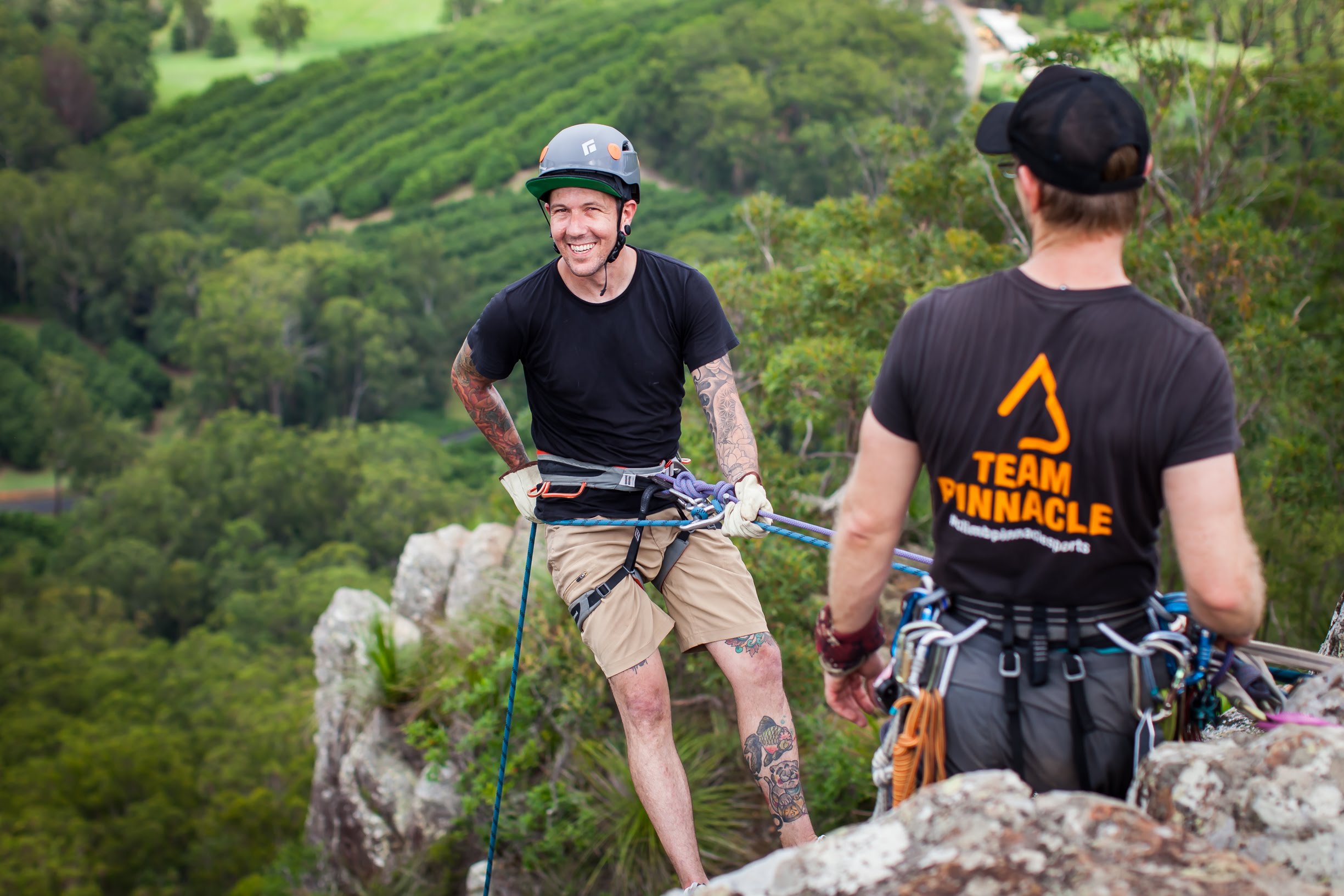Written by previous Team Pinnacle Member, Steve Thompson
UPDATE 6/3/2018: The Vergo has been re-released following two recalls that dealt with two different issues.
One of the issues was the cap that covered the pivot point of the handle would come off or become damaged. This has been resolved by changing the material at this point from plastic to metal.
The other issue was that it was possible for the handle of the device to over-rotate and get stuck in the "open" position, severely diminishing the assisted-braking capabilities of the device. This has since been fixed by installed a "stopper" that prevents excessive rotation of the handle.
In an earlier version of this review I stated that I felt this was an overall safer device than a GriGri. Upon reflection, I feel that statement was perhaps too broad, and that neither device is inherently safer than the other. I have changed that statement to simply say that I prefer this device for single-pitch sport climbing.
I recently had the pleasure of testing out the new Trango Vergo over a week of climbing in the Blue Mountains and I was thoroughly impressed. I had previously given it a single session’s worth of testing at the gym, so I wasn’t going into this trip completely unfamiliar with its use but it was still pretty new to me.
The Good
The GriGri is the standard to measure against, so that's what I'll do. The most significant difference between the GriGri and Vergo is that there is no need to override the braking mechanism when feeding out slack. With the GriGri, the most common way of paying out slack is to hold your thumb down on the cam and pull rope through, which creates an increased risk of a dangerous fall. With the Vergo, however, the method of paying out slack is to simply twist the device and pay out sideways. If a climber were to fall when paying out slack with the Vergo, the cam would still engage just as quickly.
Speaking of feeding slack, this thing is smooth! It almost feels as though there is no device there and you’re just flaking the rope. The method of paying out sideways is a bit different but takes very little getting used to and the people who belayed me with the device, who were using it for the first time, commented on how easy and smooth it was to give rope.
In terms of catching falls, the device feels very secure with its super quick cam engagement – even on thinner ropes. The downside here is that it may not be the most appropriate device for trad climbing, although the same can be said for many assisted-braking devices. After catching a fall or when the climber has reached the anchor, the device has a lovely big handle that can be used to lower the climber and provides a high level of control over rate of descent.
The Less Good
The trickiest part of using this device is unlocking it once the climber has finished faffing around after a fall and is starting to climb again. There is a neat little trick that involves squeezing the rope and the device together, but it definitely takes some practice and it wasn’t until the end of the week that I really felt like I had it dialed. Once I did, however, I felt quite comfortable with the transition from weighted to un-weighted.
One other small gripe I had is that it’s quite a small device. As a bit of a fat-fingered person, I sometimes struggled a little to get back into the correct hand position after taking in slack or fixing an issue with the rope. This definitely became less of an issue as I spent more time with the device but it did not go away altogether. It’s interesting that this is an issue at all though, considering that Trango brought in ergonomic PhDs to help design the device. Their input is certainly apparent when holding the device as it’s very comfortable and intuitive, even for someone with fat fingers. The only issue is when you’re required to quickly let go and then grab it again (unlike the GriGri, it is not possible to feed slack through the Vergo without actually holding the device).
Final Considerations
One thing that people kept asking me about was the weight of the device. It is, in fact, a whole 25g heavier than the GriGri (195g vs 170g). I did not find the difference noticeable but it might be worth considering for those ultra-light expeditions.
This is exclusively a right-handed belay device as it must be held in a specific way. So left-handed folks can either use it as if they were right-handed or steer clear altogether. The reason for this is that Trango essentially had to choose a hand in order to make the device as ergonomic as possible.
I did have one unfortunate incident where my shirt got caught in the device while I was lowering a climber. I put this down to user error but I also noted that, due to the orientation of the device while lowering, it does seem more likely to happen than with a GriGri (with the Vergo, the brake side is facing toward you while lowering while it faces away from you with the GriGri). Regardless, the shirt was easily removed and it didn't happen again.
Conclusion
In summary, the Trango Vergo is an assisted-braking belay device and has many similarities to the Petzl GriGri, but with a few striking differences. It's slightly heavier and has a bit of a learning curve but it's also cheaper, it feeds out slack and lowers more smoothly, and I prefer it for single-pitch sport climbing.
I don’t believe that it is ground-breaking enough for me to discard my GriGri altogether and buy one of these. However, if I did not already own a GriGri or other assisted-braking device, the Vergo would be at the top of my shopping list.
Looking for more great reads? Subscribe to our newsletter to stay up to date with the latest climbing tech, crag recommendations and upcoming events.






